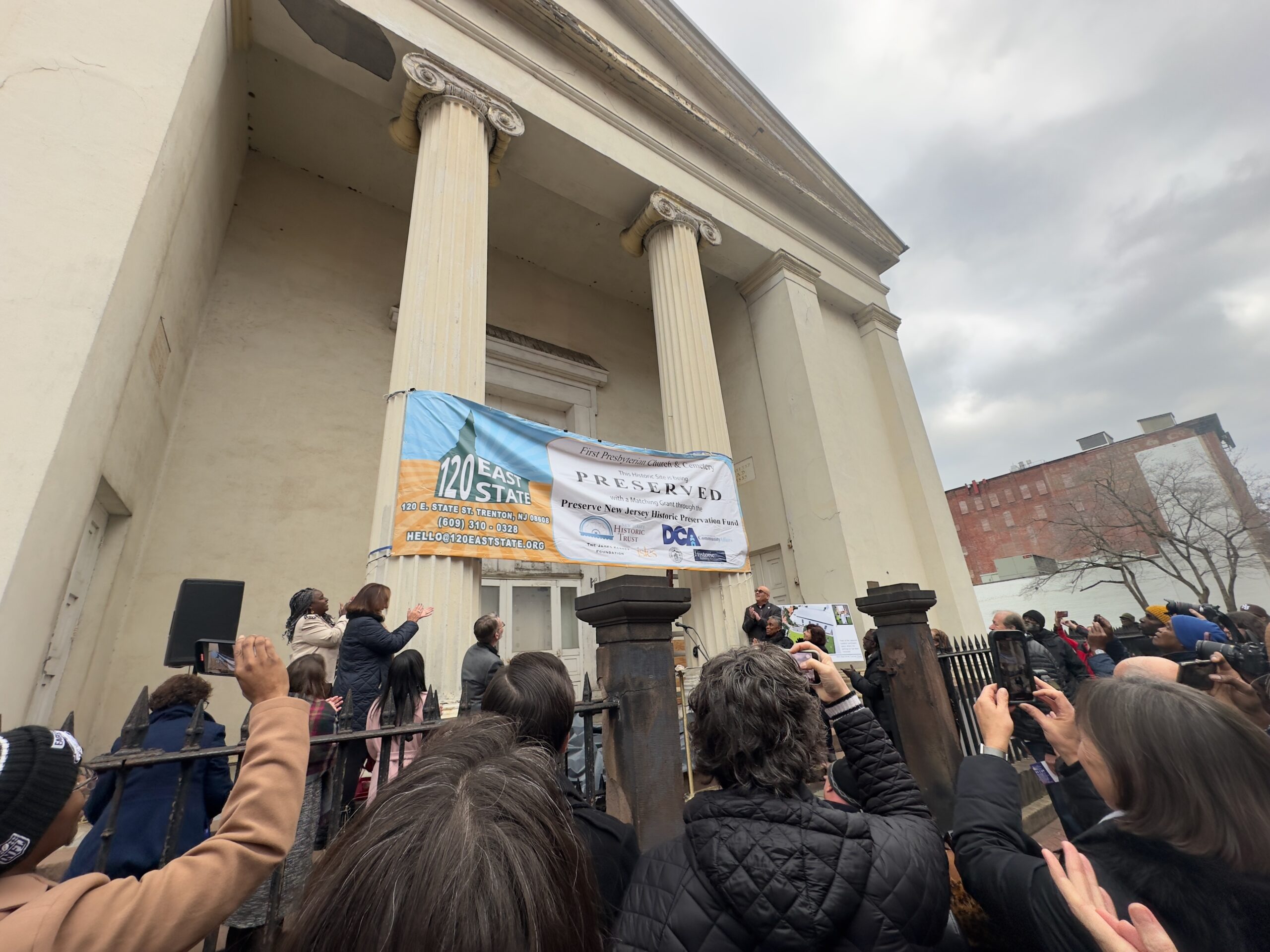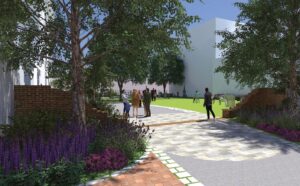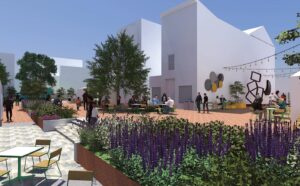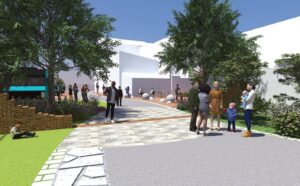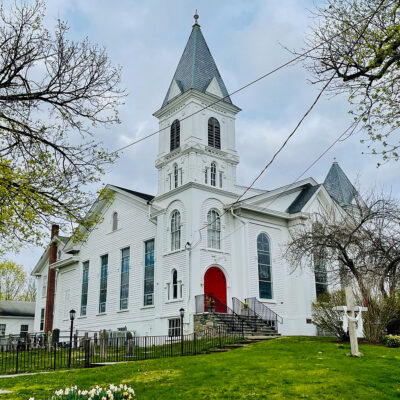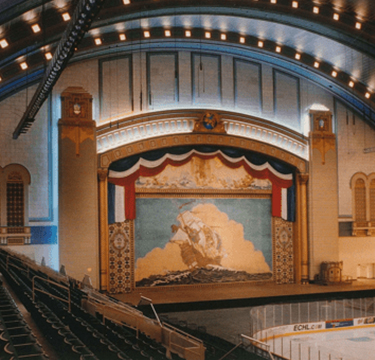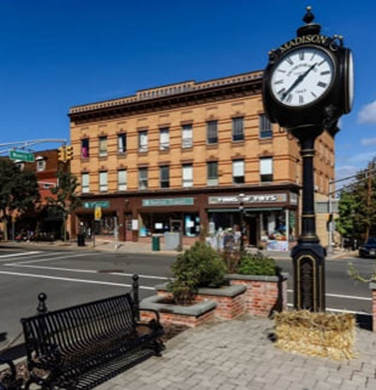In a significant leap towards preserving history and promoting cultural vibrancy, the First Presbyterian Church of Trenton is poised for a transformative renovation, buoyed by a $3 million grant from the New Jersey State Historic Trust. This initiative heralds the creation of the Steeple Center for Arts and Culture at 120 East State. Explore the multifaceted narrative of this historic landmark, its journey towards transformation, and the resounding support from the community.
Historical Significance and Designations
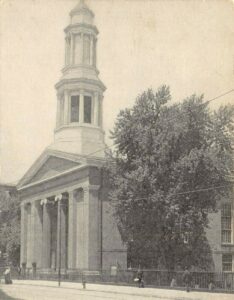
First Presbyterian Church of Trenton, postcard from early 1900s.
The First Presbyterian Church of Trenton stands as a testament to the rich history of the city, boasting formal listings in both the New Jersey Register of Historic Places (2005) and the National Register of Historic Places (2005). Designated as an individual landmark and historic site by the City of Trenton Landmarks Commission in 1974, the church, along with its Fellowship Hall and cemetery lot, abuts the locally designated Hanover/Academy Historic District.
The National Register of Historic Places nomination, spanning the period from 1727 through 1955, emphasizes the property’s architectural, political, governmental, religious, and social significance. Notable dates include the founding of Trenton’s Presbyterian congregation in 1712, the construction of the current church building in 1834-39, and a major interior renovation in 1870. The property is intimately tied to the First Battle of Trenton in 1776, forging a deep connection with the city’s revolutionary past.
The Cemetery’s Role in History
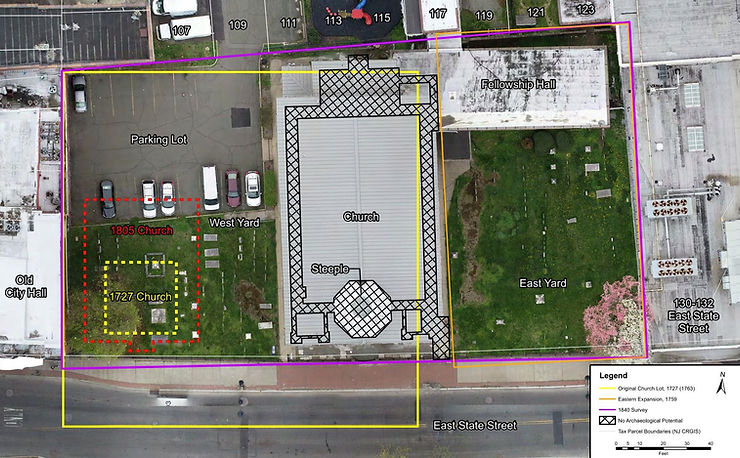
Archaeological Sensitivity Map of the First Presbyterian Church of Cemetery, Hunter Research, Inc.
The National Register documentation highlights the architectural significance of the church building, focusing on its historic qualities. Additionally, it sheds light on the cemetery, a poignant testament to Trenton’s past. Cemetery plots surrounding the church, dating from the 1730s to the late 19th century, unveil a rich mosaic of religious beliefs and burial traditions.
Despite disruptions during the construction of the second and third churches in 1839-40 and 1968, the cemetery persists as a repository of history. Noteworthy genealogical records and a 1911 burial list indicate approximately 336 tombstones, unveiling a remarkable collection of markers reflecting regional diversity. The cemetery emerges as an excellent representative collection, reflecting the wider region’s religious diversity and burial traditions.
Project Milestones and Community Support
120 East State, the nonprofit converting the historic First Presbyterian Church of Trenton complex in downtown Trenton, recently announced that the New Jersey State Historic Trust awarded it $3 million for the project. The announcement marks a major milestone in the endeavor. The design team, headed by Historic Building Architects, LLC, brings a wealth of expertise and local knowledge to ensure the preservation and transformation align with the city’s historical essence.
The Presbyterian Church (U.S.A.) Synod of the Northeast, in a recent newsletter, underscores the project’s visibility within the broader Presbyterian community. The initiative aligns seamlessly with the broader mission of preserving historical and religious landmarks, securing a broader network of support beyond the local community.
New Jersey State Historic Trust and the Historic Property Reinvestment Program
The New Jersey Historic Property Reinvestment Program, administered by the New Jersey Economic Development Authority (NJEDA), and outlined on the NJEDA’s official website, is designed to encourage investment in historic properties by providing tax credits to property owners undertaking qualified rehabilitation projects. The intention of the legislation creating the new program was to support a program such as the Steeple Center project. 120 East State will be applying to this program in fall of 2024, with fingers crossed for a positive outcome.
Community Impact and Cultural Revitalization
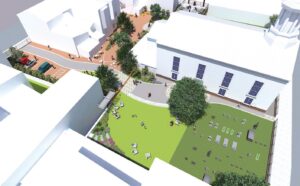 As the renovation progresses, the project’s impact on the local community is poised to be profound. Beyond the restoration of a historic landmark, the Steeple Center for Arts and Culture at 120 East State is set to become a cultural hub, breathing new life into downtown Trenton.
As the renovation progresses, the project’s impact on the local community is poised to be profound. Beyond the restoration of a historic landmark, the Steeple Center for Arts and Culture at 120 East State is set to become a cultural hub, breathing new life into downtown Trenton.
The adaptive reuse of the church and its surrounding properties aligns with broader urban revitalization efforts, contributing to the cultural and economic renaissance of the downtown area. Such initiatives have been proven to attract residents and businesses, fostering a sense of community pride and engagement.
Preserving the architectural and historical integrity of the First Presbyterian Church while repurposing it for contemporary use exemplifies a harmonious blend of past and present. This approach not only preserves the tangible history encapsulated within the church but also allows it to evolve into a dynamic space that serves the community’s present and future needs.
Conceptual views by Viridan Landscape Studio
Conclusion
The journey of the First Presbyterian Church of Trenton towards becoming the Steeple Center for Arts and Culture is a story woven with historical threads, community support, and forward-thinking initiatives. As the renovation progresses, guided by the spirit of preservation and revitalization, the church and its cemetery are poised to transcend time, standing as a monument to historic dignity amid a modern world.
The collaborative efforts of local organizations, community members, and the backing of programs like the New Jersey Historic Property Reinvestment Program, along with the expertise of the design team led by Historic Building Architects, LLC, pave the way for a harmonious blend of historical preservation and contemporary cultural expression in the heart of downtown Trenton. This transformative journey not only preserves a significant piece of Trenton’s past but also propels it into a vibrant and culturally rich future, fostering a legacy that will be cherished by generations to come.
